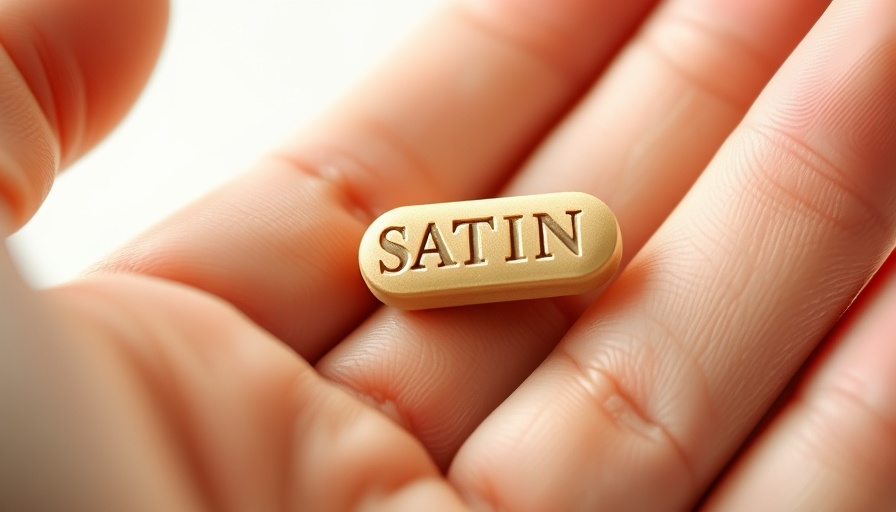
Statins and the Societal Outlook on Muscle Pain
For men aged 35 to 55, especially those focused on fitness and health, statins might appear as a double-edged sword. Cardiovascular disease remains a significant health risk, yet the option to use statins for lowering LDL cholesterol presents a dilemma for many. With research indicating that up to 80% of individuals may abandon statin therapy due to muscle pain, it's vital to explore why this disconnect occurs and how it intertwines with beliefs surrounding muscle discomfort.
Understanding Statin-Associated Muscle Symptoms (SAMS)
Statin-associated muscle symptoms (or SAMS) represent a critical concern for users. These muscle discomforts could span from mild soreness to debilitating pain, leading many to halt their medication prematurely. But is this reaction always based on genuine adverse effects? Studies suggest that a significant portion of this muscle pain may stem from psychological factors rather than pharmacological ones.
The Role of the Nocebo Effect in Statin Therapy
A fascinating aspect revealed by research is the nocebo effect. Unlike the placebo effect, where perceived benefits arise from knowing you are receiving treatment, the nocebo effect leads to negative symptoms experienced due to awareness of taking medication. In one substantial trial, once participants were informed they were taking statins, reports of muscle-related adverse events significantly increased, despite no added risk over a placebo.
Reassessing the Realities of Statin Therapy
While discomfort from statins should not be dismissed lightly, patients and doctors alike must evaluate the evidence critically. Research demonstrates that when patients were blinded to their treatment, instances of reported muscle pain were not significantly higher than those who received a placebo. This emphasizes the importance of transparency and education in managing expectations and outcomes in statin therapy.
Navigating Nutritional Support Amidst Statin Use
For those considering or currently using statins, understanding nutritional support is essential. Incorporating essential nutrients and foods that boost testosterone, like lean proteins, leafy greens, and healthy fats, can aid in overall well-being. Engaging in tailored meal planning can also ensure that men optimize their health, mitigate muscle discomfort, and stay aligned with their fitness goals.
Concluding Thoughts on Statins and Muscle Pain
Ultimately, while statins can significantly reduce cardiovascular risk, the perceived side effects, particularly muscle pain, pose considerable challenges. By understanding the psychological components at play and advocating for better communication with healthcare providers, men can make informed decisions that align with their health objectives. Don’t let fear dictate your health choices!
 Add Row
Add Row  Add
Add 




Write A Comment